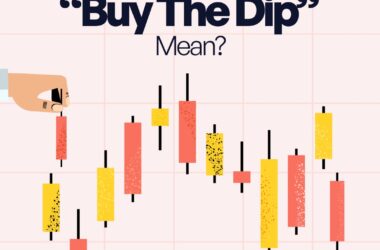If you want to get a good understanding of how investment portfolios work then think of it like this. You have just been paid. You sort out bills, buy groceries, send something to mum, and then you think, “Let me start investing seriously this time.”
You open an investment app like Trove, and boom, stocks, ETFs, bonds it all looks exciting but slightly overwhelming. You might ask yourself, “Do I just pick one and stick with it?”
That’s where the idea of an investment portfolio comes in. It’s like your personal financial toolbox.
In this blog post, we’ll break it all down in a way that makes sense, even if you’ve never invested in a kobo before.
What Is an Investment Portfolio?
Think of an investment portfolio as your mix of investments your collection of different assets that you’re using to build wealth.
It’s like packing for a long trip. You wouldn’t pack only shoes or just tops. You’d mix it up shirts, trousers, socks, toothpaste, maybe even snacks.
That way, if it rains or your sandals break, you’ve got options.
That’s what a portfolio does it balances your financial journey by spreading your money across different types of investments so that no one bad day in the market can ruin everything.
What Can Go Into a Portfolio?
There’s no one-size-fits-all answer, but these are the most common types of assets people include:
- Stocks: Shares of companies like Dangote Cement PLC, MTN, Apple, or Tesla.
- Bonds: Loans you give to governments or companies. More stable, less risky.
- ETFs: Like mutual funds, but they trade like stocks and give access to global markets.
- Real Estate: Property investments either physical or digital (like REITs).
- Cash: Yes, even cash or emergency savings count they’re your low-risk safety net.
A portfolio can be any combination of these. The goal is balance.
Why Should You Care About Having a Portfolio?
Because just putting money in one place like a single stock or a savings account is risky.
What if that one stock crashes? What if inflation eats up the value of your savings?
But if you spread your money around, you reduce your risk and increase your chances of steady growth.
Let’s say you invest only in tech stocks. One regulation change could crash the entire sector. But if you also had money in healthcare, bonds, and mutual funds, your other investments could balance things out.
A portfolio is like a team, if one player has a bad day, the others can still win the game.
How to Build an Investment Portfolio
Let’s simplify it. Building an investment portfolio doesn’t mean you need millions or a fancy suit. Here’s how to start, step by step:
1. Define Your Goal
Ask yourself:
- What am I investing for?
- Is it short-term (buying a car), medium-term (starting a business), or long-term (retirement or buying a home)?
Your goal determines how you build your portfolio.
Short-term = safer, low-risk investments.
Long-term = more growth-oriented, higher-risk assets.
2. Know Your Risk Tolerance
How much wahala can you handle?
If your ₦100,000 investment drops to ₦90,000 tomorrow, will you be calm or restless?
- If you panic easily, lean towards stable assets like bonds or mutual funds.
- If you’re okay with some ups and downs, add more stocks or ETFs.
- If you’re comfortable with high risk, you can explore crypto or emerging markets—but never with money you can’t afford to lose.
3. Start Small, But Start Smart
Don’t wait to “have more money.” You can start with what you have.
Even with ₦5,000, you can begin investing in fractional shares or mutual funds using platforms like Trove.
The key is to start even if it feels small now.
4. Diversify (Don’t put all Your Eggs in One Basket)
This is where the power of a portfolio shows itself.
Don’t put everything into one stock or one fund. Mix it up:
- Some in Nigerian stocks
- Some in U.S. or foreign ETFs
- Some in mutual funds
- A little in low-risk assets like bonds
- And always keep a small emergency fund aside
That way, if one asset falls, others can cushion the effect.
5. Revisit and Rebalance from Time to Time
Life changes your money too.
Every few months, check in on your portfolio. Are your goals the same? Did one part grow much faster than the others? Maybe it’s time to sell a bit of that and put it somewhere else.
This is called rebalancing, and it keeps your portfolio healthy and aligned with your goals.
What Does a Sample Beginner Portfolio Look Like?
Let’s say Prince is 28 years old, earning a steady income, and just starting out.
He has ₦100,000 to invest. A balanced beginner portfolio could look like this:
- ₦40,000 in Nigerian blue-chip stocks (for growth)
- ₦20,000 in mutual funds (for stability)
- ₦20,000 in U.S. ETFs (for global exposure)
- ₦10,000 in government bonds (for low-risk balance)
- ₦10,000 in emergency savings (for quick access)
Simple, sensible, and structured.
Does Your Portfolio Stay the Same Forever?
No. It grows and changes with you.
When you’re young and have time, you can afford to take more risks. But as you approach big goals like retirement or paying for your kids’ education, you might need to play it safer.
A good portfolio evolves just like you do.
Conclusion
An investment portfolio isn’t just for people in suits or finance experts. It’s for anyone who wants to grow their money wisely.
It’s not about chasing the hottest trend or putting everything into crypto because your friend did. It’s about creating a balance that works for you your goals, your comfort level, and your lifestyle.
So the next time you open your investment app and feel overwhelmed, just remember:
You’re not choosing “the one best thing.” You’re building your own mix, and your own financial strategy.

